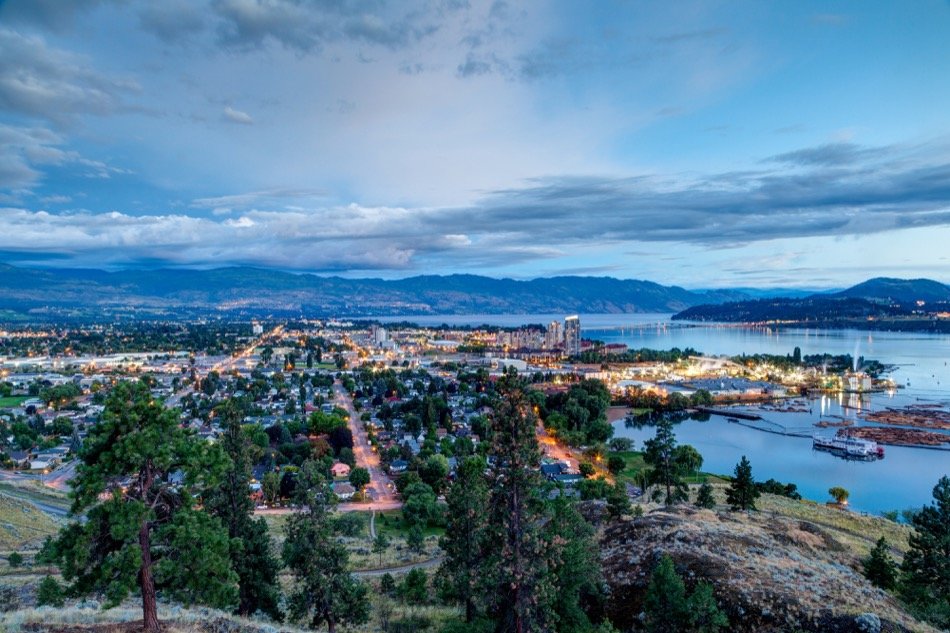The Unique History Of Kelowna, BC
Posted by Dave Kotler on Thursday, January 16th, 2020 at 7:32am.
 While approximately 130,000 individuals call Kelowna, BC home today, this vibrant community has grown exponentially since its humble beginnings. Lands once only traversed by natives such as the Syilx of the Okanagan First Nation eventually caught the attention of a Scottish fur trader named David Stuart in 1811.
While approximately 130,000 individuals call Kelowna, BC home today, this vibrant community has grown exponentially since its humble beginnings. Lands once only traversed by natives such as the Syilx of the Okanagan First Nation eventually caught the attention of a Scottish fur trader named David Stuart in 1811.
Within five decades of that visit, Oblate missionaries came and constructed a mission under the guidance of Father Pandosy, and church members settled in the area around 1859. Just two years later, Hudson's Bay Company set up a tradition post and eventually added a grain mill in 1871. The community flourished as more people sought out these peaceful lands, and the area eventually came to be called Kelowna around 1892.
The Early Settlers and the Legend of How Kelowna Was Named
When the town was incorporated in 1892, a special Okanagan word was chosen due to a legend told by the natives. Purportedly, a man with a surplus of facial hair emerged from an underground shelter, catching natives off guard. They referred to him as a “Kim-ach-touch,” which translates to brown bear. Town planners enjoyed this story, and moved forward establishing the official name as Kelowna.
While it's unknown exactly how well the native Syilx received all of these changes, these ancient peoples still have a strong local presence to this day. Surely, they left behind the hunting and gathering days to some degree, as the town grew to over 600 settlers with a newspaper, multiple canneries, packing plants and sawmills. Grain cultivation, cattle farming and the arrival of the railways saw Kelowna grow even more, and by 1925, “The Orchard City” had a booming economy and culture.
The Role of Steamships in the History of Kelowna, BC
During the growth of the community, transportation for goods sourced and prepared for use locally needed to be shipped, and steamships filled that role for many years before the railway was established. Okanagan Lake was the perfect way to traverse between the steep slopes and harsh terrains surrounding Kelowna, and a mighty stem wheel steamer called the S.S. Aberdeen hit the waters in 1893.
This impressive craft could carry 180 tonnes of goods and up to 250 passengers, and ran services between Okanagan Landing, Kelowna and Penticton. Two more steam wheelers joined the Aberdeen for two decades until all three ships were decommissioned in 1916 with the dominance of the Canadian Pacific Railway.
Kelowna Becomes Accessible Via Railway
Along with the big mining boom of the early 20th century, the Canadian Pacific Railway decided to establish a link between interior mining communities and ports in Vancouver and New Westminster. Eventually, a track was laid traversing the Myra Canyon just east of Kelowna, and countless engineers and builders laboured until its completion in 1916. This impressive railway was operated until 1972 and is now maintained along with nearby trails by the Myra Canyon Trestle Restoration Society.
Life in Kelowna, BC Today
Residents here enjoy living in one the largest cities in British Columbia and have access to exceptional educational institutions, fabulous locally grown wines, and an array of attractions that have made it a top tourist centre. Water lovers flock to the beaches on the lake in sunny weather, and the ski resorts are hopping in the winter months. It's a year-round haven for adventure! There's no end to what one can find and explore amid the deep-rooted historical community of Kelowna, BC, so plan your visit today to leave your footprints here, too.
If the opportunities in Kelowna excite you, contact the agents at KelownaHomes.ca at 250-999-9844 to get in touch with a local real estate agent who can help you find the perfect home in Kelowna today.
Dave Kotler

